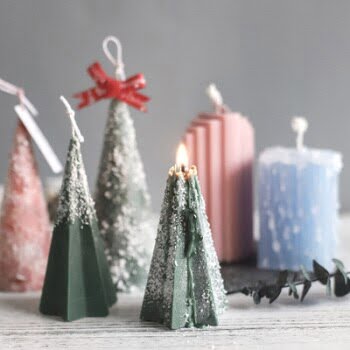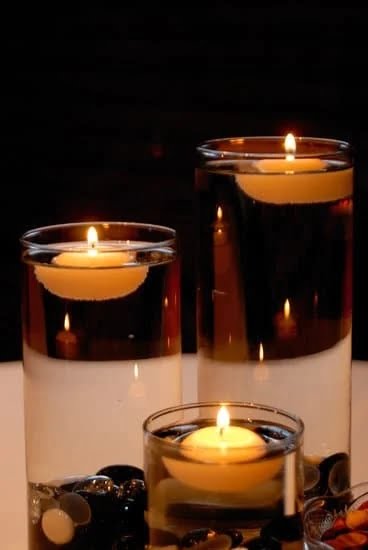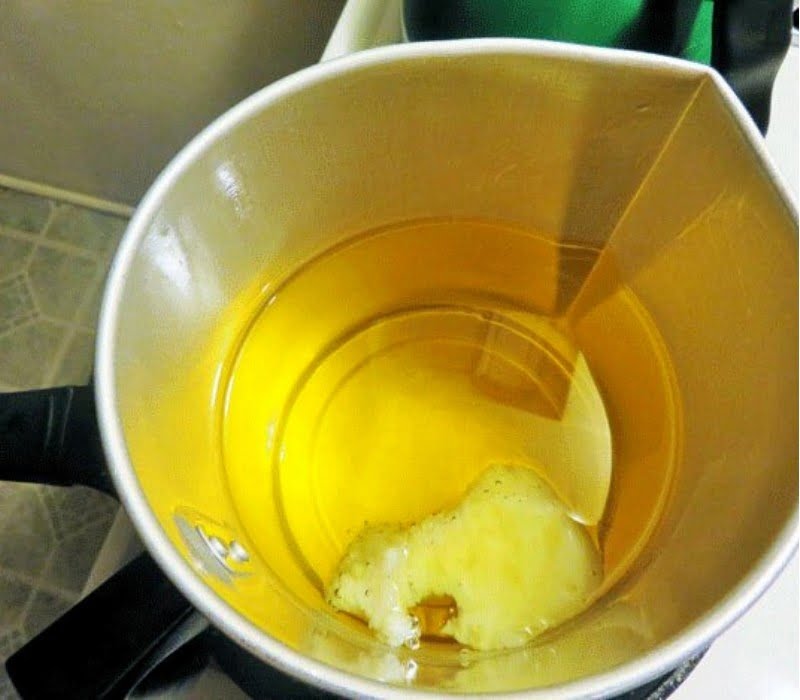Candle making has become an increasingly popular hobby and business venture, allowing individuals to tap into their creativity while producing beautiful and fragrant candles. However, for those new to the craft, it can be overwhelming to know which oils are suitable for use in candle making. In this article, we will delve into the world of candle making, with a specific focus on the oils that can be used to add fragrance and enhance the overall experience.
When it comes to candle making, oils play a crucial role in creating scented candles. They not only provide a pleasant fragrance but also contribute to the quality of the candles themselves. Essential oils and fragrance oils are two main types of oils used in candle making. While essential oils are derived from natural plant sources through various extraction methods, fragrance oils are synthetic blends specifically formulated to replicate scents or create unique fragrance combinations.
Understanding the differences between essential oils and fragrance oils is important when deciding which oil is most suitable for your candle-making needs. Both types have their benefits and drawbacks, such as cost, longevity of scent throw, and compatibility with different waxes. By exploring these aspects further in this article, you will gain insight into which type of oil is best suited for your particular project.
As you embark on your journey into the art of candle making, it’s essential to familiarize yourself with the various oils available on the market. Essential oils such as lavender, eucalyptus, or vanilla are popular choices due to their distinct scents and potential aromatherapy benefits. On the other hand, fragrance oils offer a wider range of options for replicating complex scents or creating unique blends that may not be achievable with essential oils alone.
Stay tuned as we delve deeper into exploring popular essential oils for candle making and unveil the power of fragrance oils in creating captivating aromas. We will also discuss using plant-based options like soy or coconut oil and how specific blends can promote relaxation and stress relief. Safety considerations and proper techniques for scenting candles will also be covered, ensuring that you have all the necessary information to embark on your scented candle making journey with confidence.
Understanding Essential Oils and Fragrance Oils in Candle Making
When it comes to candle making, selecting the right oils is crucial to achieving the desired scent and overall quality of the candles. There are two main types of oils that are commonly used in candle making: essential oils and fragrance oils.
Essential oils are natural, concentrated plant extracts that capture the aromatic essence of various plants. They are derived from flowers, leaves, stems, bark, or fruits using methods such as steam distillation or cold pressing. Essential oils offer a wide range of scents, from floral and fruity to woody and spicy. They are often favored by those who prefer natural products and enjoy the therapeutic benefits that certain essential oils can provide.
On the other hand, fragrance oils are synthetic or artificially created scents specifically formulated for candle making. These oils are designed to mimic various fragrances, including popular perfumes or aromas not found in nature. Fragrance oils offer an extensive selection of scents, providing candle makers with endless possibilities for creating unique combinations or replicating complex aromas.
Both essential oils and fragrance oils have their own benefits and drawbacks when it comes to candle making. Essential oils tend to have a more subtle scent compared to fragrance oils but are generally considered a more natural option. However, it is important to note that not all essential oils are suited for use in candles as some may not perform well during the burning process or may even be flammable.
Fragrance oils, on the other hand, offer a wider variety of scents and better scent throw than essential oils. They also tend to be less expensive than their natural counterparts. However, fragrance oils typically contain synthetic ingredients and may not provide the same therapeutic benefits as certain essential oil varieties.
In order to create high-quality scented candles, many candle makers choose to use both types of oil in their creations. By combining essential oils with fragrance oils, they can achieve a well-rounded and complex scent profile that appeals to a wider range of customers.
To create a well-balanced fragrance blend, it is important to properly mix and blend different essential oils and/or fragrance oils. Some essential oils work better together, while others may not complement each other’s scent profiles. Experimentation and testing are key in finding the perfect combination of oils for desired fragrance combinations.
| Essential Oils | Fragrance Oils |
|---|---|
| Derived from plants using methods such as steam distillation or cold pressing | Synthetic or artificially created scents specifically formulated for candle making |
| Natural option | More extensive selection of scents |
| Subtle scent compared to fragrance oils | Better scent throw than essential oils |
| Potential aromatherapy benefits | Tend to be less expensive |
Exploring Popular Essential Oils for Candle Making
When it comes to creating scented candles, essential oils are a popular choice among candle makers. These oils are derived from various plant sources and offer unique fragrances that can add depth and complexity to the candles. Here is a comprehensive list of popular essential oils commonly used in candle making:
- Lavender: Known for its calming properties, lavender essential oil is a favorite among candle makers. Its soothing scent promotes relaxation and helps reduce stress and anxiety.
- Eucalyptus: With its refreshing aroma, eucalyptus essential oil is often used in candles intended for respiratory support or to create an invigorating atmosphere.
- Lemon: The bright and citrusy scent of lemon essential oil is perfect for creating uplifting and energizing candles. It adds a burst of freshness to any space.
- Peppermint: Peppermint essential oil offers a cooling and invigorating fragrance, making it ideal for promoting focus and concentration.
- Rosemary: Known for its herbal aroma, rosemary essential oil adds a touch of earthiness to candles. It can help improve memory retention and enhance mental clarity.
- Sweet Orange: The sweet and tangy scent of sweet orange essential oil is cherished by many candle enthusiasts for its mood-boosting properties.
- Vanilla: A classic fragrance in the candle making world, vanilla essential oil provides a warm and comforting aroma that creates a cozy ambiance.
- Sandalwood: With its rich, woody scent, sandalwood essential oil brings warmth and depth to candles. It is often used in meditation or relaxation blends.
When using essential oils in candle making, it’s important to properly mix and blend different oils to achieve desired fragrance combinations. Start by experimenting with small amounts of each oil until you find the perfect balance of scents. Keep in mind that some oils have stronger aromas than others, so adjusting the ratio may be necessary depending on the desired intensity of the scent.
Incorporating essential oils into your candle making process allows you to create unique and personalized scents that will enhance the overall experience for yourself or your customers. So, don’t be afraid to get creative and explore the diverse world of essential oils in candle making.
Unveiling the Power of Fragrance Oils in Candle Making
Fragrance oils play a pivotal role in candle making, offering an extensive range of scents and possibilities for creating unique and captivating candles. In this section, we will explore the power of fragrance oils in candle making and discuss the diverse scent options they provide.
Wide Range of Scents
One of the main advantages of using fragrance oils in candle making is the wide array of scents available. Whether you prefer floral, fruity, fresh, or exotic fragrances, there is a fragrance oil to suit every preference. Fragrance oils can be formulated to replicate the scent of natural ingredients or to create imaginative blends that cannot be found in nature. From delicate rose petals to zesty citrus fruits, the options are virtually endless when it comes to fragrance oils.
Capturing Complex Scents
Fragrance oils are particularly beneficial for candle makers who strive to replicate complex scents or create unique fragrance combinations. These oils often contain a blend of aromatic substances designed to mimic specific smells like freshly baked cookies, spring rain, or even a crackling fireplace. By using fragrance oils, candle makers can capture these intricate aromas in their candles without having to rely solely on natural essential oils.
Additionally, fragrance oils offer consistency in scent throughout the entire burning process. Unlike essential oils which tend to dissipate more quickly when heated, fragrance oils maintain their scent for longer periods. This makes them ideal for those who enjoy a stronger and longer-lasting aroma.
Blending Fragrance Oils
One of the exciting aspects of working with fragrance oils is the ability to experiment with different blends and create custom scents. By mixing compatible fragrance oils together, candle makers can develop signature fragrances that reflect their unique style and creativity.
When blending fragrances, it’s important to consider complementary notes and balance different strengths so that one scent does not overpower another. Some popular combinations include vanilla and lavender for a soothing aroma, citrus and floral for a refreshing scent, or woods and spices for a warm and comforting fragrance.
Natural Options
The Growing Trend of Plant-Based Oils in Candle Making
In recent years, there has been a noticeable shift towards using plant-based oils in candle making. This growing trend can be attributed to various reasons, including the benefits that these natural oils bring to both the candle making process and the overall quality of the candles produced. Plant-based oils such as soy, coconut, and beeswax have gained popularity among candle makers due to their numerous advantages over synthetic oils.
Soy wax, derived from soybean oil, is one of the most commonly used plant-based oils in candle making. One of its main benefits is its clean burn, as it produces minimal soot or toxins when compared to traditional paraffin wax. Soy wax also has a longer burning time and better scent throw, allowing for a more enjoyable and efficient candle experience. Additionally, soy wax is eco-friendly and sustainable, making it a popular choice among environmentally conscious consumers.
Coconut oil is another plant-based oil that has made its way into the world of candle making. It offers a clean burn with little to no sooting or smoking, resulting in a healthier indoor environment. The natural aroma of coconut oil adds an exotic touch to candles and blends well with other fragrances. Furthermore, coconut wax has excellent scent retention capabilities, ensuring that the fragrance lasts throughout the entire burn time.
Beeswax is also highly sought after by candle makers who prefer natural options for their creations. Beeswax has a natural sweet scent that adds warmth and ambiance to candles. It is known for its long burning time and strong scent throw capabilities. Beeswax also emits negative ions when burned, which can help purify the air by neutralizing pollutants like dust and mold spores.
Incorporating Plant-Based Oils into Candle Making
When utilizing plant-based oils in candle making, it is essential to understand the proper techniques for incorporating them into your candles. Here are a few tips to help you get started:
- Choosing the right wax: Different plant-based oils work best with specific types of wax. For example, soy wax is an excellent base for blending with essential oils, while coconut wax is well-suited for creating aromatic and luxurious candles.
- Calculating oil to wax ratio: Finding the correct ratio of oil to wax is crucial for achieving the desired fragrance intensity in your candles. It is recommended to use around 6-10% fragrance load for soy and coconut waxes, while beeswax can handle a higher load of up to 12%.
- Proper temperature control: To ensure proper adherence of the oil to the wax, it is important to maintain a suitable pouring temperature. Different plant-based oils have different melting points, so it is important to follow specific temperature guidelines provided by the oil manufacturer.
- Blending and experimenting: The beauty of using plant-based oils in candle making lies in the ability to blend and experiment with different scents. Consider mixing various essential oils or combining them with fragrance oils to create unique combinations that align with your preferences or brand identity.
By exploring natural options like soy, coconut, and beeswax in candle making, you can embrace a more sustainable approach while enjoying their distinct aroma and benefits. Experimentation and creativity are key when it comes to discovering new scent profiles that will captivate both yourself and your candle-loving customers.
Aromatherapy Benefits
Candle making has long been associated with relaxation and creating a calming ambiance. One of the key aspects that contributes to this soothing environment is the use of essential oils in candles. Essential oils are natural, highly concentrated oils extracted from plants, flowers, or herbs. In candle making, they not only add a pleasing aroma but also offer numerous aromatherapy benefits for relaxation and stress relief.
Several essential oils are known for their calming properties and can effectively create an atmosphere of tranquility in your space. Lavender oil is one of the most popular choices for relaxation due to its soothing scent that helps promote better sleep quality and reduce anxiety levels. Another commonly used oil is chamomile, which has a gentle, floral aroma known for its sedative qualities that aid in stress reduction.
If you prefer a more citrusy scent, bergamot oil is an excellent choice as it acts as a mood enhancer and promotes feelings of calmness. The fresh and uplifting scent of peppermint oil can also provide stress relief by instilling mental clarity and easing tension headaches.
To incorporate these essential oils into your candle making process, it’s important to ensure proper blending techniques. Start with selecting fragrances that work well together – for example, lavender pairs beautifully with chamomile or clary sage. Use approximately 1 ounce of essential oil per pound of wax to achieve desired results while avoiding overwhelming scents. Remember to always follow recommended usage rates provided by the fragrance manufacturer to ensure safety.
When creating candles specifically for relaxation purposes, consider using soy wax as it has excellent fragrance-holding qualities and burns cleaner than other waxes. Additionally, choose natural wicks made from materials such as cotton or wooden wicks to maintain an eco-friendly candle-making process.
By incorporating these best oils for relaxation and stress relief into your candle making endeavors, you can create products that not only add a delightful fragrance to your space but also provide therapeutic benefits. Enjoy the soothing effects of aromatherapy and unwind in the calming atmosphere you’ve created with your custom scented candles.
Safety and Considerations
When it comes to choosing oils for candle making, safety should always be a top priority. It is important to select oils that are safe for candle use and free from harmful substances. In this section, we will address potential safety concerns related to using oils in candle making and offer guidance on choosing oils that are compliant with relevant candle making standards and regulations.
One key consideration when selecting oils for candle making is their flash point. The flash point is the temperature at which an oil can ignite when exposed to an open flame. It is crucial to choose oils with a high enough flash point to ensure the safety of your candles. Oils with low flash points can cause candles to burn too quickly or even create a fire hazard.
Another important factor to consider is the potential presence of toxins or allergens in certain oils. Some fragrance oils may contain synthetic compounds that can release harmful chemicals when burned. It is recommended to choose oils that are labeled as phthalate-free and free from any known allergens.
To ensure compliance with standards and regulations, it is advisable to carefully review the Safety Data Sheets (SDS) provided by oil suppliers. These sheets provide detailed information on the chemical composition of the oil, its hazards, and recommended handling procedures. It is essential to follow any safety guidelines provided by the oil supplier and take necessary precautions when working with these materials.
In summary, selecting the right oils for candle making involves considering factors such as flash point, toxin content, and compliance with safety standards. By prioritizing safety in your oil selection process, you can enjoy the art of candle making while minimizing potential risks.
| Consideration | Guidelines |
|---|---|
| Flash Point | Choose oils with a high enough flash point to ensure safety and prevent fire hazards |
| Toxins and Allergens | Opt for oils labeled as phthalate-free and free from known allergens to avoid harmful chemicals |
| Review Safety Data Sheets (SDS) | Carefully review SDS provided by oil suppliers for information on chemical composition, hazards, and handling procedures |
Tips for Properly Scenting Candles with Oils
Properly scenting candles with oils is a crucial step in candle making to ensure that the desired fragrance is evenly distributed and long-lasting. Here are some tips to help you achieve the perfect scent in your homemade candles:
- Determine the ideal oil to wax ratio: The amount of oil you use will depend on the type of wax you are using and the desired strength of the fragrance. As a general rule, for soy wax, it is recommended to use 6-10% fragrance load (amount of oil relative to the weight of wax) for a strong scent.
For paraffin wax, 6-8% fragrance load is usually sufficient. However, it is important to refer to the manufacturer’s guidelines for specific recommendations. - Mix oils thoroughly: Before adding oils to your melted wax, make sure to mix them well. This ensures an even distribution of fragrance throughout the candle and prevents the oil from separating or pooling at the top.
- Consider temperature: It is important to add your chosen oils at the right temperature. Adding oils when your wax is too hot can cause them to evaporate quickly, resulting in a weaker scent throw. On the other hand, adding oils when your wax has cooled down too much may lead to poor adhesion between the oil and wax.
- Test fragrances before pouring: To ensure that you have achieved your desired scent combination, it is always a good idea to do a test pour before pouring a larger batch of candles. This allows you to make adjustments if needed and avoid wasting materials.
- Allow proper curing time: After pouring your scented candles, be patient and allow them sufficient time to cure before burning or packaging them for sale or personal use. This allows the fragrance oil time to bond with the wax and ensures a stronger scent throw when they are lit.
Remember, properly scenting candles with oils requires experimentation and fine-tuning based on personal preference. Don’t be afraid to discover and create your own unique fragrance blends by combining different essential oils or fragrance oils. The key is to have fun and enjoy the process as you explore the boundless world of scented candle making.
Conclusion
In conclusion, the use of oils in candle making is essential for creating scented candles that not only look beautiful but also smell amazing. Throughout this article, we have explored the different types of oils commonly used in candle making, including essential oils, fragrance oils, and plant-based oils. Each type has its own benefits and drawbacks, providing an array of options for candle makers to choose from.
Essential oils are natural extracts from plants that offer a wide range of scents and therapeutic properties. They are popular choices among candle makers who prefer a more organic and holistic approach.
On the other hand, fragrance oils offer a broader range of scent options, allowing for the replication of complex fragrances or the creation of unique blends. Additionally, the use of plant-based oils such as soy, coconut, or beeswax has gained popularity due to their eco-friendly nature and sustainability.
When selecting oils for candle making, it is crucial to prioritize safety and consider any potential hazards. Using oils that are safe for candle use and free from harmful substances ensures both the quality and safety of your candles. It is important to choose oils that comply with relevant standards and regulations to avoid any negative effects on health or performance.
Frequently Asked Questions
Can you use any oil to make candles?
While there are various oils that can be used for candle making, not all oils are suitable for this purpose. It is important to use oils that have a high melting point and low volatility. Generally, vegetable-based oils such as soybean oil, coconut oil, or palm oil are commonly used for making candles.
These oils have the necessary properties to ensure that the candle burns properly and doesn’t produce excessive smoke or soot. Oils that may contain impurities or have a low flashpoint, such as motor oil or cooking oil, should not be used as they can potentially pose a safety hazard.
What type of oil is best for candle making?
The best type of oil for candle making depends on personal preference and the desired characteristics of the candle. However, many candle makers prefer using soybean wax or beeswax as they tend to have good burn qualities and produce less soot compared to other types of wax. Soy wax is derived from soybeans and is known for its clean burning nature and excellent fragrance-holding capacity.
Beeswax, on the other hand, is all-natural and has a sweet honey-like scent while also providing a longer burn time. Ultimately, experimenting with different types of oils can help you find the one that suits your specific needs and preferences in terms of scent throw, burn quality, and overall performance.
What can I use instead of fragrance oil for candles?
If you don’t have access to fragrance oil specifically designed for candles or prefer not to use it, there are alternative options available to add fragrance to your candles. Essential oils are often used as a substitute for synthetic fragrance oils in candle making. They offer natural scents derived from plants and botanicals like lavender, citrus fruits, eucalyptus, or sandalwood.
However, it’s important to note that essential oils may have different evaporation rates than fragrance oils; some can evaporate quickly during the burning process and therefore might require higher concentrations to achieve a noticeable scent throw in candles. Additionally, certain essential oils may discolor the wax or have a lower flashpoint, so it’s crucial to research and test each oil beforehand to ensure compatibility and safety.

Welcome to my candle making blog! In this blog, I will be sharing my tips and tricks for making candles. I will also be sharing some of my favorite recipes.





